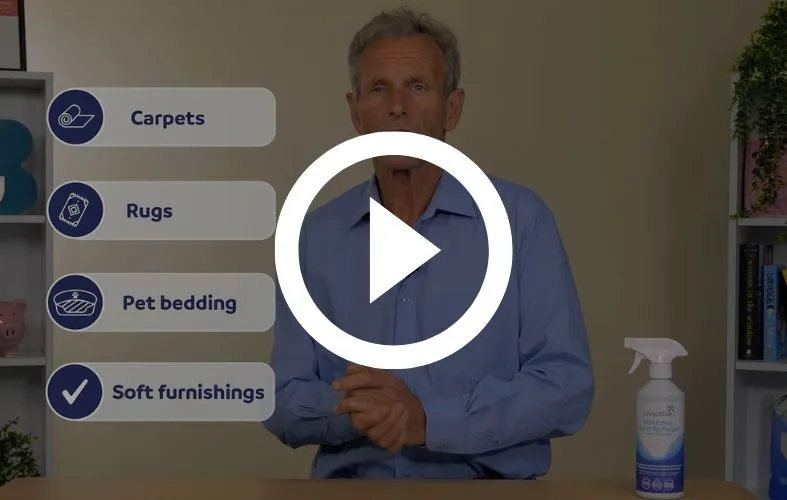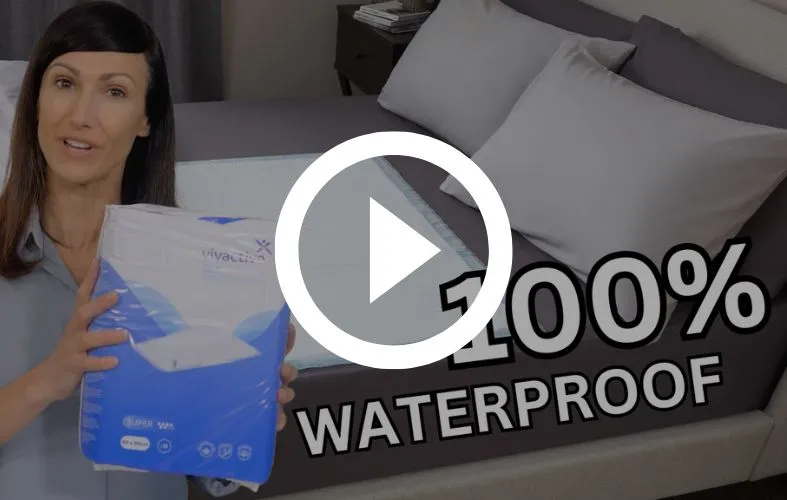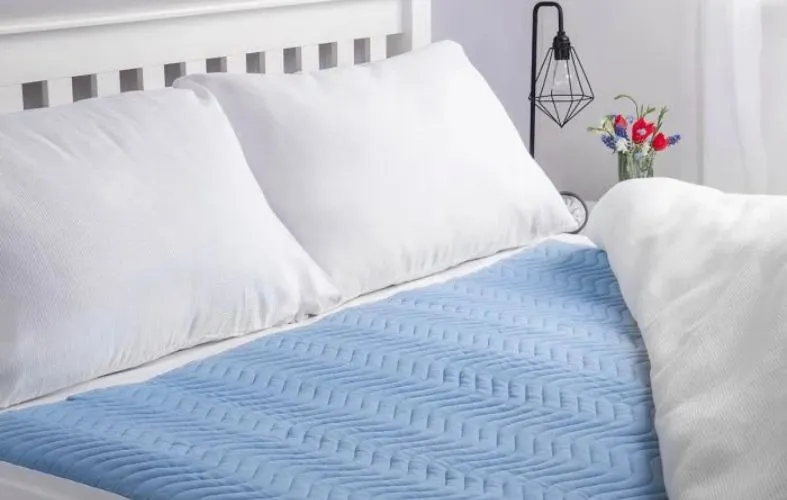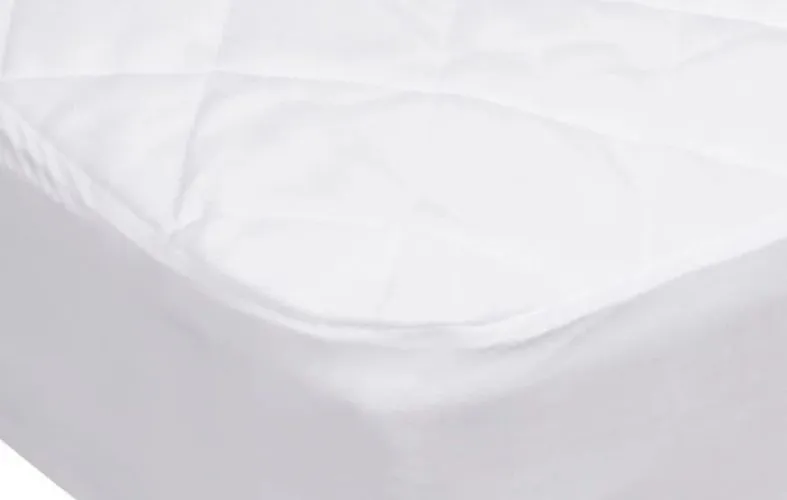
Share this page with friends
How to remove urine stains from your mattress
No matter how hard we try to prevent leakages as a result of bladder weakness or urinary incontinence, sometimes they just happen. What we really don’t want, is any leakage getting through to the furniture underneath. It’s a bit unhygienic, can cause discomfort when you’re sleeping or sitting and let’s be honest, can get a bit smelly. So, what can we do if we have a pesky leak that seeps through and causes a stain?
Unsightly stains can sometimes be difficult to lift. But, before you spend your time arranging for someone to come round and take your furniture away, why not try a cheap and easy cleaning solution?
Let’s take a look at some of the best ways to remove stains from a mattress and what you can do to help prevent getting them in the future!
How to remove urine stains from mattress
Cleaning products
Nobody likes having yellow stains on their mattress. But, what products can you use to get rid of them? Lots of people swear by natural solutions like baking soda, but they don’t always get the job done and they need a bit of manual labour to put together. No good for someone looking for something simple and effective.
The Vivactive Mattress Stain Remover is a fantastic choice for anyone trying to get those hard to remove stains out of their mattress. It contains hydrogen peroxide, which is a mild antiseptic and a powerful disinfectant that can brighten dull and stained surfaces. Hydrogen peroxide is also much gentler than bleach, so there is no risk of causing damage or discolouration to the bedding.
Not only will it remove stains, it leaves a light and refreshing scent. The last thing you want is a mattress that stinks of bleach. No thanks.
Our Vivactive Mattress Stain Remover is also very easy to use, you don’t even need to rub it into the stained area. Gone are the days of rolling your sleeves up and putting in a lot of elbow grease, you simply spray onto the stain and leave it for half an hour. Step 1, spray onto the area. Step 2, make a nice cup of tea and put the TV on. Step 3, the stain is gone.
I’ve referred specifically to mattresses, but actually you can also use this stain remover on other furnishings, such as rugs, carpet and chairs.
Hydrogen peroxide for mattress stains
Hydrogen peroxide is known for its stain-fighting properties, making it ideal for cleaning urine from a mattress. It works by breaking down the uric acid found in urine, effectively lifting the stain and neutralising odors. Compared to bleach, hydrogen peroxide is much gentler on fabric and won't cause unwanted damage to your mattress. This makes it one of the most effective cleaning solutions for urine stains on a mattress.
DIY mattress stain removal techniques
If you're looking for a more budget-friendly option, you can try using household ingredients. Baking soda, for example, is often used to remove odors and stains from mattresses. Sprinkle it directly onto the stained area, leave it for a few hours, and then vacuum it up. While this method works for lighter stains, it may not be effective for larger or more deeply ingrained stains. Consider combining baking soda with vinegar or hydrogen peroxide for better results.

How to prevent urine from getting onto your mattress
Once the stains are gone, you’ll probably want to try your best to keep it that way. As the old saying goes ‘prevention is better than cure’. If you've got a decent solution in place to stop urine getting into your furniture, you won't need to clean up stains!
Disposable bed pads
Disposable bed pads are thin sheets of absorbent material which the user lies on top of. It sits above the mattress and the bedsheet, so that liquids don’t soak through and ruin your linen. If you have an accident, you simply pop the pad in the bin and replace it with a new one.
Using a super-absorbent bed pad like the Vivactive Bed Pad Maxi adds an extra layer of protection for your sheets and mattresses. By collecting up any stray liquids and locking them away, your sheets will stay fresh and dry. No smells, no stains.
They’re also great if you travel a lot. Frequenting hotels and other people's houses can sometimes be a bit of a nightmare if you experience nocturia (nighttime leakage) or frequent urine leaks. Their small size means they can be carried around easily and discreetly. Once soiled, they’re simply bundled up and disposed of.
If you’re leaking through to your sheets and mattress a lot, you might find yourself stripping the bedding and putting a wash on quite often. If there’s no buffer there to absorb the liquid, it’s going straight into your bedding. It might not be too annoying at first, but after a while, the constant labour of washing sheets and cleaning mattresses can grate on someone. With disposable bed pads, you simply roll them up and chuck them in the bin, problem solved.

Washable bed pads
Similar to disposable bed pads, you lie on top of the washable pad. The washable pad sits on top of the mattress and bedsheet so that they’re both fully protected from leaks. The big difference between washable pads and disposable pads is their ability to be washed and reused.
Unlike disposable pads, you won’t need to keep stocking up. As you’re not chucking them away after every use, you won’t have to buy more than you need. Whilst there’s a higher initial cost, over time, you’ll find you save a bit of money.
They also come with a much greater absorption capacity. If you’re someone who experiences big leaks, you’ll probably want to use something with big absorption. As an example, the Vivactive King-Size Washable Bed Pad can absorb up to a whopping 5000ml of liquid.

Washable mattress protector
Waterproof mattress protectors are a bit more of a heavy-duty solution for protecting your bedding. They’re typically made from plastics and might be slightly more uncomfortable than the bed pads mentioned above.
They do however have their place. Protectors like the Dritech Waterproof Draw Sheet are 100% waterproof, which provides a complete protection experience. They’re super-strong, so won’t crack, discolour or harden over time and they’re really easy to clean. Thanks to their smooth surface you can simply wipe them clean without any fuss.

Change the bedding as soon as possible
Lastly, if an accident occurs, it's important to change the bedding right away. If you can get the bedding off and into the washer straight away, you might be able to prevent urine from seeping into the mattress, reducing the possibility of staining.
How to get the smell of urine out of a mattress
Why does urine leave a strong odour?
Urine contains compounds like ammonia and urea, which, when absorbed into your mattress, can create a strong and lingering smell. The longer the urine sits on the mattress without cleaning, the more difficult it becomes to remove both the stain and the odour. To effectively remove urine smell from a mattress, it’s crucial to act quickly and use the right cleaning methods.
Baking soda and vinegar: a powerful deodorising combo
One of the most popular and effective ways to get rid of the urine smell on a mattress is by using baking soda and vinegar. First, blot the stained area to remove as much moisture as possible. Then, spray white vinegar over the stain and let it sit for a few minutes. Afterward, sprinkle a generous amount of baking soda over the affected area. The vinegar will neutralise the odour-causing compounds, while the baking soda will absorb the moisture and freshen up the mattress. Leave the baking soda to sit for several hours before vacuuming it up.
Using hydrogen peroxide to eliminate odours
Hydrogen peroxide is not only effective for removing stains but also for deodorising a mattress. As an antiseptic, it breaks down the compounds in urine that cause odours. To eliminate urine smells from a mattress, mix hydrogen peroxide with a few drops of dish soap and water. Spray the solution onto the stained area and let it sit for about 15 minutes before blotting it up. This method helps neutralise both the stain and the unpleasant smell, leaving your mattress fresh and clean.
Enzyme cleaners: a specialised solution
If home remedies don’t work, consider using a commercial enzyme cleaner. These cleaners are specifically designed to break down the proteins and acids found in urine, which are responsible for both stains and odours. By using an enzyme-based cleaner on your mattress, you can ensure that the smell is fully eradicated and that the mattress is properly disinfected. Follow the product instructions for the best results.
Air drying and sun exposure
After cleaning your mattress, it’s important to allow it to dry thoroughly. Air drying your mattress in a well-ventilated room or placing it outside in the sun can help speed up the drying process and further reduce any remaining smells. The sun’s UV rays naturally help to kill bacteria and neutralise odours. Be sure to let your mattress dry completely to avoid mould growth, which can be a problem if moisture is trapped inside.
Prevent urine stains with incontinence products
Now you know how to remove urine stains from a mattress, and how you can protect them, why not see our product range to see if our solutions can support you? At Incontinence Choice, we have lot of mattress cleaning products including the Vivactive 4-in-1 disinfectant cleaner, as well as a collection of protective products like our waterproof mattress protectors.
We have a huge selection of products for both males and females from brands such as Vivactive, TENA, iD, Always, Attends, and more. Find the right products for you today!





